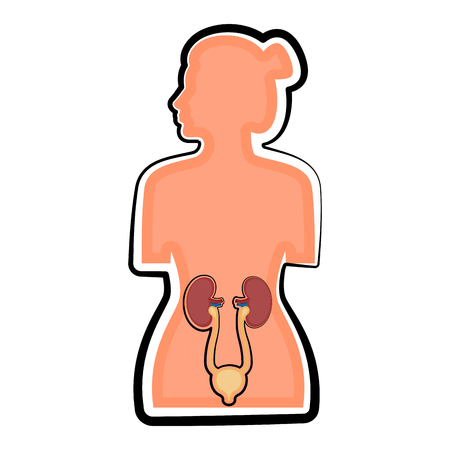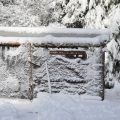1. Understanding Water Sources in the U.S. Wilderness
When you’re exploring the American backcountry, finding clean water is one of your top priorities. The wilderness across the United States offers a variety of natural water sources, but not all are created equal. Knowing what to look for and understanding the different options can make your outdoor adventure safer and more enjoyable.
Common Natural Water Sources
Let’s take a closer look at the most common types of water sources you’ll find while hiking or camping in the American wild:
| Water Source | Description | Pros | Cons |
|---|---|---|---|
| Rivers | Large, flowing bodies of water that often run through valleys or canyons. | Usually abundant and easy to spot; often reliable year-round. | Can be contaminated by upstream activities; may have strong currents. |
| Streams & Creeks | Smaller than rivers, these are common in forests and mountains. | Tend to be less polluted if higher up; easier access for filling bottles. | May dry up late in summer; still risk of contamination from wildlife. |
| Lakes & Ponds | Standing bodies of water found in many national parks and wilderness areas. | Can provide plenty of water; scenic spots for rest stops. | Stagnant water can breed bacteria and algae; harder to purify. |
| Springs | Naturally occurring points where groundwater emerges on the surface. | Often among the cleanest sources; usually cool and clear. | Not always easy to locate; can dry up during droughts. |
| Seasonal Snowmelt | Melted snow from mountain tops or alpine meadows, especially in spring and early summer. | Generally very pure when freshly melted; plentiful in high elevations during certain seasons. | Not available year-round; requires time to collect and melt if still frozen. |
What Makes a Good Water Source?
In general, fast-moving water (like streams and rivers) is safer than stagnant water (like ponds). Look for sources upstream from trails, campsites, or grazing areas to avoid potential contaminants. Springs are highly prized by backpackers because they often emerge filtered through rock layers, making them cleaner than surface water. Seasonal snowmelt is another excellent option—just be sure it’s fresh and not contaminated by nearby animal activity or human traffic.
Quick Tips for Spotting Safe Water:
- Avoid water with visible algae blooms or an unusual color or smell.
- If possible, collect water from the highest point available (upstream).
- Avoid collecting near animal tracks or areas heavily used by people or livestock.
- If using snow, pick clean, white snow—not yellow or dirty patches!
Your Next Step: Evaluating Water Quality and Risks
Now that you know where to look for water in the American backcountry, it’s important to recognize potential hazards before drinking. In our next section, we’ll break down how to evaluate water quality and understand the risks that come with each type of source.
2. Essential Tools and Gear for Water Collection
Why Having the Right Gear Matters
When youre out in the American backcountry, finding clean water is only half the battle—you also need the right tools to safely collect, carry, and treat it. The right equipment keeps you hydrated and healthy, no matter where your adventure takes you.
Must-Have Equipment for Backcountry Water Collection
| Item | Purpose | Pro Tips |
|---|---|---|
| Maps & Compass | Navigate to water sources like streams or lakes marked on topographic maps. | Always carry a paper map as backup in case electronics fail. |
| GPS Device or Smartphone App | Pinpoint exact locations of springs, rivers, or creeks, even off-trail. | Download offline maps before heading out; signal isn’t guaranteed. |
| Water Bottles & Collapsible Containers | Collect and store water while on the move. | Nalgene bottles are sturdy; collapsible bags save space when empty. |
| Water Filter or Purifier | Remove bacteria, protozoa, and sometimes viruses from collected water. | Pump filters work fast at streams; gravity filters are great for camp. |
| Chemical Treatment (Tablets/Drops) | Kills germs that filters might miss, especially viruses. | Carry as a lightweight backup in case your filter breaks. |
| Dipper or Scoop | Makes it easier to collect water from shallow sources. | A cut-off plastic bottle works in a pinch! |
| Bandana or Pre-Filter Cloth | Screens out sediment before filtering or treating water. | Tie it over your bottle opening to strain out debris first. |
Packing Smart: What You Really Need
You don’t have to bring everything on this list—choose gear based on your route, group size, and expected conditions. For most American backcountry hikes, a reliable map, GPS app, sturdy water container, and a good filter are the essentials. If you’re venturing far from help or into unfamiliar territory, consider packing extra treatment methods just in case. Remember: clean water keeps your adventure going strong!

3. Identifying Safe Water: Key Signs to Look For
When you’re out in the American backcountry, finding water is only half the battle—the other half is making sure it’s safe to drink. Visual assessment skills are a must for every hiker and camper. Here’s what you need to know about spotting clean water and avoiding potential risks unique to North America.
Key Signs of Clean Water Sources
| Sign | What to Look For | Why It Matters |
|---|---|---|
| Clear Appearance | Water looks transparent; minimal particles or discoloration | Muddy or cloudy water often carries more bacteria and sediment |
| Flowing Water | Streams or springs with visible movement | Still water is more likely to harbor harmful microorganisms |
| No Nearby Animal Activity | No visible droppings, tracks, or carcasses upstream | Animal waste can contaminate water with dangerous pathogens like Giardia or E. coli |
| No Algae Blooms | No green, blue-green, or brown mats on the surface or edges | Certain algae in North American lakes and ponds can release toxins harmful to humans and pets |
| No Chemical Odors or Oil Sheens | No unusual smells (chemical, gasoline) or rainbow sheens on the surface | Chemical runoff from nearby farms, roads, or campsites can pollute water sources |
| Upstream Safety Check | Look upstream for at least 100 feet if possible; avoid water below campsites or trails | Reduces risk of human-caused contamination such as soap, trash, or waste entering the water source |
Unique North American Risk Factors to Watch For
Bacteria and Protozoa (e.g., Giardia & Cryptosporidium)
These are common in U.S. and Canadian wilderness areas due to abundant wildlife. Even crystal-clear streams may carry invisible threats. Always filter or treat before drinking.
Cyanobacteria (Blue-Green Algae)
Lakes and slow-moving rivers in summer can develop toxic blooms. Avoid any source with floating mats, scum, or strong musty odors.
Mining and Agricultural Runoff
If you’re near old mining areas or farmland, be cautious of heavy metals and pesticides—these can’t always be removed by basic filters.
Quick Reference Table: Safe vs. Unsafe Water Signs
| Safe Sign | Unsafe Sign |
|---|---|
| Clear, moving stream high in mountains | Pond with stagnant water and animal tracks nearby |
| No smell, no debris in waterway above collection point | Chemical odor or visible trash upstream/nearby |
| No visible algae growths in cool season/freshwater spring | Greenish film on rocks/surface during warm weather |
Trust your eyes—and your nose! If anything seems off about a water source, it’s best to move on and look for a cleaner option. And remember: even after finding “clean” water, filtration or purification is always recommended in the American backcountry.
4. Best Practices for Purifying Backcountry Water
Why Water Purification Is a Must in the American Backcountry
Even if water looks crystal clear in the wild, it can still hide bacteria, viruses, and parasites that could ruin your adventure. Streams and lakes across the U.S.—from the Rockies to the Appalachians—are home to microscopic threats like Giardia and Cryptosporidium. Purifying your water is not just a smart move; its essential for staying healthy while exploring Americas outdoors.
Popular Methods for Purifying Water
| Method | How It Works | Best For | Considerations |
|---|---|---|---|
| Boiling | Bring water to a rolling boil for at least 1 minute (3 minutes above 6,500 ft) | All terrains, especially high elevations or when unsure about chemical resistance | Takes time and fuel; need a stove or fire source |
| Filtering | Use portable pump, squeeze, or gravity filters to remove bacteria & protozoa | Lakes, rivers, and larger streams; fast access to safe water | Most filters don’t remove viruses; can clog with silty water |
| Chemical Treatment | Add tablets or drops (like iodine or chlorine dioxide) to kill microbes | When weight matters or as backup; great for solo hikers or emergencies | Takes 30 mins–4 hrs; some taste issues; read instructions carefully |
| UV Light Devices | Batteries power UV lamps to zap pathogens in seconds/minutes | Clear water sources; tech-savvy hikers and groups needing quick purification | Batteries required; doesn’t work well in cloudy/silty water |
Tips Tailored for American Terrains and Conditions
- Desert Southwest: Water may be scarce—always carry extra and use chemical treatments if boiling isn’t practical.
- Mountain Regions: Boiling is reliable at altitude but takes longer. Snowmelt can look clean but still needs purification.
- Southeast & Mid-Atlantic: Humid areas mean more standing water—filter before chemical treatment to handle cloudiness.
- National Parks & Popular Trails: High traffic means higher contamination risk—double up with filtration plus chemicals if possible.
Straightforward Steps for Safe Drinking Water Anywhere in the U.S.
- Scoop up the clearest water you can find—avoid spots near campsites or animal tracks.
- If using a filter, follow manufacturer directions and keep gear clean between uses.
- If boiling, let it roll! Don’t just heat until hot—give it enough time depending on elevation.
- If using chemicals, shake or stir well and wait the full recommended time before drinking.
- If using UV, make sure batteries are fresh and pre-filter cloudy water first.
5. Leave No Trace: Respecting the American Wilderness
When searching for clean water in the American backcountry, it’s vital to follow the principles of Leave No Trace (LNT). This not only protects the wilderness but also ensures that future adventurers can enjoy pristine environments and reliable water sources. In the U.S., conservation ethics are deeply rooted in respect for public lands and shared natural resources.
Understanding Your Impact When Sourcing Water
Even simple actions like collecting water can affect the environment. By minimizing your impact, you help keep water sources clean and wildlife habitats healthy. Here are some key guidelines:
| Action | Leave No Trace Tip |
|---|---|
| Where to Collect Water | Always take water from running sources like streams or rivers, away from campsites and trails to avoid disturbing natural settings. |
| Using Soaps or Chemicals | Never wash dishes or bathe directly in lakes or streams. Carry water 200 feet away before cleaning anything, even with biodegradable soap. |
| Avoid Contaminating Sources | Keep all waste—including food scraps and toilet paper—far from any water source. Bury human waste at least 6-8 inches deep and 200 feet from water. |
| Respect Wildlife | Don’t disturb animals near water. Many species depend on these areas for survival, especially in dry regions. |
The American Conservation Ethic in Practice
In the United States, millions of people share public lands for recreation, hunting, fishing, and adventure. Following LNT when locating water helps preserve these lands for everyone. It’s about stewardship—leaving places better than you found them and setting a positive example for others.
Quick Reminders for Responsible Water Sourcing
- Stay on established trails when approaching water sources.
- Use a collapsible bucket or bottle to transport water away from the source before any treatment or cleaning.
- If you see trash or signs of pollution near a stream or lake, pack it out—even if it’s not yours.
- Educate your group about Leave No Trace practices before heading out.
Your Role as a Steward of the Backcountry
Sourcing clean water is crucial, but so is protecting these resources. Every small action matters—by respecting the land and following Leave No Trace, you help ensure clean water remains available for generations of outdoor lovers across America.

